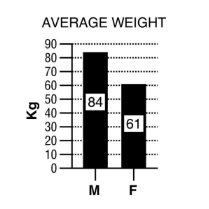The fallopian tubes:
A. connect the uterus to the vagina.
B. carry sperm from the testes to the epididymis.
C. degenerate in females, due to the presence of Müllerian-inhibiting substance (MIS).
D. carry ova from the ovaries to the uterus.
E. develop from the embryonic Wolffian duct system.
D
You might also like to view...
Table 1.3 shows data on various factors that may or may not be related to resting pulse rate, time to recovery to resting pulse rate after a few minutes of exercise, and reaction time measured by how quickly a student could press a keyboard key after seeing a computer-generated prompt. For each question below, write a testable hypothesis, identify the dependent and independent variables, sketch
an appropriate graph of the results, and draw a conclusion from the data presented in the table. Discuss your results.
A. Does caffeine consumption have an effect on resting pulse rate?
B. Does age play a role in resting pulse rate? Does weight?
C. Is there a relationship between eating breakfast and recovery time?
D. Is there a relationship between reaction time and height?
E. Do women who smoke show differences in their resting pulse rates compared to female nonsmokers or to
male smokers and nonsmokers?
F. Does regular exercise have an effect on resting pulse rate?


If the ovaries were removed from an otherwise healthy 20-year-old female, which of the following would you expect to see?
A) cessation of menstruation B) increased blood levels of LH C) increased blood levels of GnRH D) increased blood levels of FSH E) All of these observations
Which of these nerves supplies muscles that adduct the thigh?
A) common fibular nerve B) femoral nerve C) obturator nerve D) sural nerve E) coccygeal plexus
What accounts for 95% of the volume of urine?
A. Urea B. Nitrogenous wastes C. Electrolytes D. Water